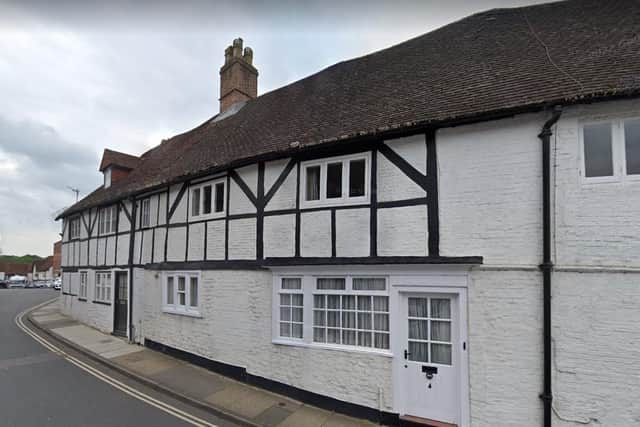Listed property: What you need to know when buy a listed property
and live on Freeview channel 276
The reason why the exact number is not known is because one single entry on the National Heritage List for England (NHLE) can sometimes cover a number of individual units, such as a row of terraced houses.
In England and Wales there are three categories of listed buildings: Grade I means buildings of exceptional interest 2.5 per cent of listed buildings are in this category places such as Buckingham Palace, Grade II* is a building of particular importance and around 5.5. per cent of listed buildings are Grade II*, and Grade II which highlights buildings of special architectural or historic interest with around 92 per cent of listed buildings falling into this category.
Advertisement
Hide AdAdvertisement
Hide AdHome buyers should be aware that a Grade I listed property will have more restrictions than a Grade II listed.


A building being classed as ‘listed’ means that it is protected from alterations that may negatively impact the character of the building and its historical context. The classification can protect the entire building (inside and out), along with any structures attached to the building, including modern extensions, as well as outbuildings, garden walls and even garden statues.
If you are unsure if your property is listed the National Heritage List for England (NHLE) contains details, all you need to do is search The List.
Here are a few things you need to be aware of if you do buy a listed property:
Advertisement
Hide AdAdvertisement
Hide AdYou’ll have to get permission from your local authority for any alterations you want to carry out, including extensions, changes to the internal layout or even putting up a satellite dish.
You’ll need specialist insurance. The rebuild cost of a listed building will be significantly more than a non-listed building, as the local authority will determine how and if it will be rebuilt.
For repairs it is a grey area if you need listed building consent, technically ‘like for like’ repairs don’t require consent, but what classes as a like for like repair varies between authorities. The Home Owners Alliance says: “For example, replacing a few tiles on your roof with matching ones is unlikely to be a problem. But if you plan to replace a window even with an exact replica you are likely to need consent. If you own a listed building you should get to know your local authority’s conservation officer and check with them as to whether any repairs you are planning need consent.”
Repairs on listed buildings are often more expensive due to the need for specialist tradesmen.
Advertisement
Hide AdAdvertisement
Hide AdYou can check out the reasons for listing. The National Heritage List for England will give specific details on why the property is listed. This will give an indication of the key attributes or features you’re unlikely to be able to change.
Use a surveyor who specialises in listed buildings.
Check that any previous work has been authorised. If previous owners have carried out work to the property without gaining the necessary consent, then when ownership transfers to you, you will become liable for correcting any mistakes. You’ll need to make sure your insurance covers this.
The Home Owners Alliance says: “So should I buy a listed building? There are certainly extra hoops to jump through if you take on a listed building, but in return you get to own a unique property and a beautiful slice of the country’s history. Furthermore, listed buildings are likely to retain their value more than any other type of property. Just do your research and know exactly what you are taking on before you sign on the dotted line.”